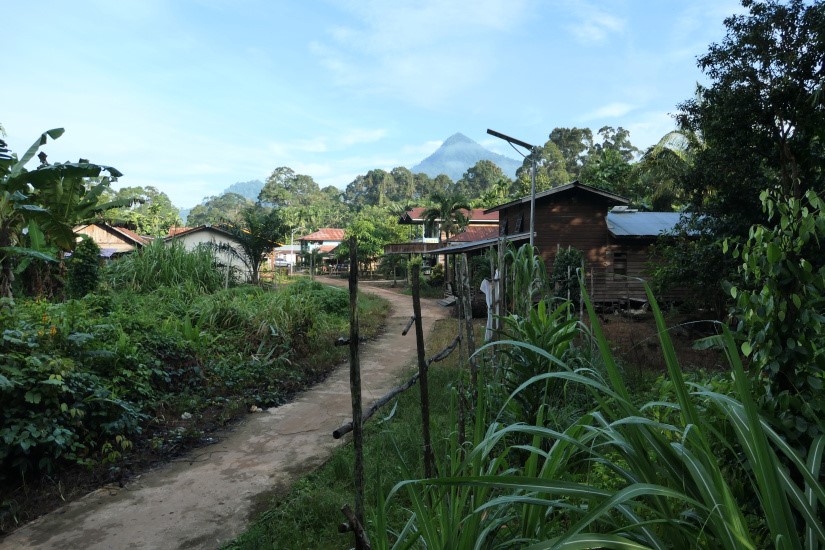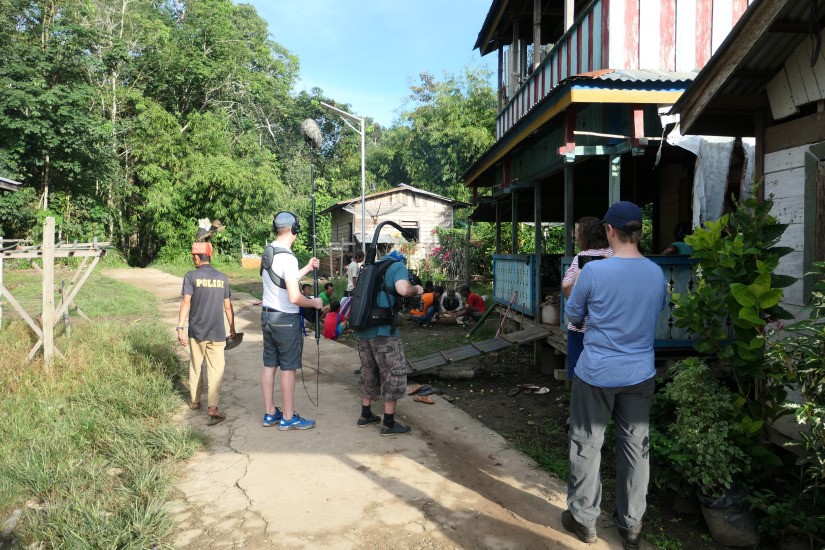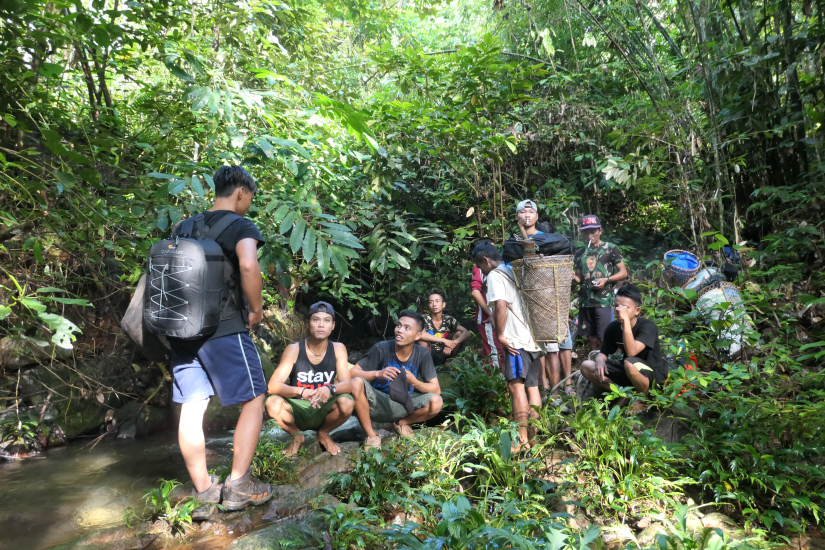Paul Thung is a doctoral researcher in anthropology at Brunel University London
Last April I participated in a Dutch documentary film, “Aapje Aram,” which centres on the body of a baby orangutan that recently emerged from the collection of the Dutch National Biodiversity Centre “Naturalis”. This experience gave me interesting insights into the work of representation, which led me to reflect on which stories are told in orangutan conservation, and for whom. Like many media representations, Aapje Aram evokes a sense of awe and wonder. This may effectively increase public interest for history, science, and conservation. But it also necessarily omits some difficult issues and questions. By considering other aims and audiences, important new perspectives could take shape.
But first, let’s introduce the film itself.
The story of Aram
Among the many natural history specimens obtained by the first Dutch scientific expedition to Western and Central Borneo of 1893-1894, were the remains of six orangutans: four skins, four skulls, one skeleton, and one “young male orangutan” (Jentink 1897). More than 120 years after his death, this “little boy” was rediscovered in a large, metal tank filled with alcohol and unsorted animals, and given the name “Aram” (after a Dutch song from the Sixties, which marvels at the smallness of a human baby).
In Aapje Aram the director of Naturalis (Edwin van Huis) and three Dutch scientists (evolutionary biologist Menno Schilthuizen, primatologist Serge Wich, and an anthropologist, me) travel to the Kenepai, the small mountain in West Kalimantan where Aram was collected. We follow in the footsteps of the official zoologist of the expedition, the Swiss Dr Johann Büttikofer, who at the time worked for the National Museum of Natural History (present-day Naturalis). His reports to the Royal Dutch Geographic Society form the guiding historical text, which characters in the film carry around and from which edited excerpts are read out by a narrator (Büttikofer 1894).
Flyer for Aapje Aram
By re-enacting the expedition, Aapje Aram provides imaginative resources for a public discussion around the ethics of museum collecting. Aram died shortly after his mother was shot by members of the expedition, despite attempts to keep him alive. Killing animals was part of the scientists’ job then, but today shooting animals for science is highly suspect. Such shifting ethical norms pose a dilemma for Naturalis, explains Edwin, the director. Apparently, visitors are increasingly unwilling to see animals that have been killed. But what, then, about the millions of specimens in the depository that were killed when societal norms were different?
Aram also symbolises the disappearance of orangutans and their habitat. In 1893, Büttikofer noted an abundance of orangutans. The morning after his arrival at the foot of the Kenepai, he shot one in his pyjamas (Büttikofer 1894, 291). Today, there are no conspecifics of Aram to be found in the remaining fragments of that forest. To grapple with this reality, the film shows several efforts at understanding and mitigating the threats to orangutan populations: a nest survey, a camera-equipped drone, interviews with village elders, and orangutan rescue and rehabilitation. Although these projects are not explained in detail, the film flags several salient issues: human-orangutan conflict, hunting, habitat loss, and the question of how, as outsiders, to engage with local people.

Sungai Tuba village with the Kenepai in the background
Common tropes
Even as the film conveys these important messages, it also reproduces narrative tropes that commonly shape media representations of orangutan research and conservation.
The adventure story: in which the protagonists, guided by a strong moral purpose and relying primarily on their wits, skills, and equipment, willingly put themselves in unpredictable, challenging, potentially dangerous situations. Accounts of primatological fieldwork or the rescue of displaced orangutans often emphasise such heroism. Similarities are evident in Aapje Aram, when we see the Dutchmen navigate dusty roads and silent rivers, fix cars and drones, and cook on open fire by a campsite.
The idea of pristine nature: according to which large parts of Borneo are untouched by humans, and orangutans live in expansive reserves of primary forest. Along the lines of such ideas, the film introduces Borneo with an image of a wooded landscape without apparent human presence, suggests that Büttikofer travelled through extensive uninhabited areas, and describes a rubber grove as if it were a natural forest.
Exoticism: the portrayal of a group of people as fundamentally (and wonderfully) different (from an assumed norm). Orangutan conservation often relies on stereotypes, and the film may reproduce those by depicting the locals primarily in terms of their myths, dances, and rituals.

Filming the preparations of a feast
What gets left out
There is a kernel of truth in these common tropes: it is adventurous to work in Borneo, which does have many trees, and where people indeed act, think, and feel different than in the Netherlands. However, this is only one way of telling the story. When we consider what the film leaves out of the picture, a more complex story emerges.
Politics: the original expedition was envisioned and organised by Resident Tromp, the highest-ranking Dutch bureaucrat in West Borneo, with financial support from the colonial government. The expansion and legitimation of Dutch rule were important motivations (Sysling 2016, 8) – made urgent by recent British advances in North Borneo and the discovery of oil and coal on the island (Sellato 2002, 19 ff.). As one of the expedition’s most influential supporters (Molengraaff 1900, ix–x) explained: “our rule there should not just be based on the supremacy of the sword or purse, but above all, as has until today been the case, also that of the mind” (Hubrecht 1894, 312).
Support networks: Büttikofer relied on funding, transportation and supplies from the government, as well as military maps and the services of government soldiers. His ostensibly friendly reception by local communities may have been informed by political calculations about the costs and benefits of working with the Dutch government (Sellato 2002, 23–27). Similarly, the film relied on the services and acceptance of many drivers, porters, hosts, conservation workers, and officials.
Managed landscapes: On his boat ride to the Kenepai, Büttikofer passed by many smaller and larger settlements (Büttikofer 1900, 10) and the landscape was significantly shaped by human activity. There was “little high forest” visible along the river, but rather a mixed landscape of cultivated and fallowed fields (Büttikofer 1894, 289). Also, orangutan scientists currently believe that mixed, managed landscapes form important and viable orangutan habitat, provided that orangutan killing can be effectively mitigated (Spehar et al. 2018).
These brief insights reveal that the story of Aram could have raised several important questions besides that of the ethics of collecting orangutans. To what extent are science and media representations shaped by political-economic considerations? What drives local people to support these projects and how are they affected by them? How might landscapes be managed to accommodate the needs of both orangutans and people?

Some of the local porters during the climb of the Kenepai
Considering other aims and audiences
Why were these issues absent from the film? It seems to have been a deliberate choice of the filmmakers, who wanted to achieve a particular effect among a particular audience. If we understand the audience to be roughly the people who would visit the Naturalis museum, the Aapje Aram goes a long way towards carrying out the mission of Naturalis: “to tell the story of the richness of the natural world in its natural historical and cultural historical context, making it attractive to all ages, and encouraging a sense of awe”.
The Aapje Aram story is thus inherently (and understandably) partial – a reflection of the audience and the museological context for which it was created. Like all media representations, it doesn’t simply uncover a pre-existing reality, but constructs it in particular ways. The way Aapje Aram constructs reality, resonates with many current media representations of orangutans and their conservation, which often address audiences in the global North in order to rally their support for orangutan conservation. While this support is much needed, the particular “gaze” (Abimbola 2019) of such stories can blot out some of the complexities that conservation must grapple with on the ground.
So what would happen if media representations addressed some of the other aims and audiences that are important to conservation? To convey the importance of orangutan conservation to the people that themselves live near their habitat, for example, it would help to include careful references to specific landscape markers, moral principles, and local histories. And what orangutan-related stories could we tell managers of industrial corporations, middle-class South-East Asians, or a Conference of the Parties to the Intergovernmental Panel on Climate Change? What new narrative possibilities might we discover in the course of such pursuits?
For more on Anthropology at Brunel, please visit https://www.brunel.ac.uk/anthropology
This article was republished with permission from Paul Thung.
Paul's blog, POKOK, can he read here: https://pokokborneo.wordpress.com/